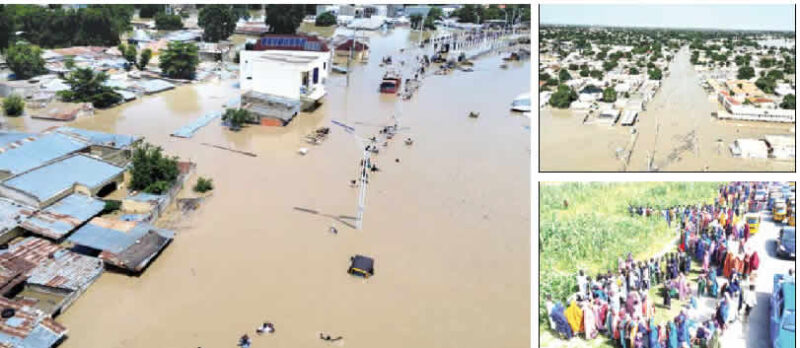Hundreds of displaced flood victims in Maiduguri took to the streets today, demanding urgent food and relief items after a severe flood that hit the city on September 9, 2024. The devastating flood left more than a million people displaced and destroyed key infrastructure, leaving many without shelter, food, and clean water.
The protesters, who mainly came from the heavily affected Baga Road area, blocked the roads in frustration, causing heavy traffic at major junctions. Many expressed their anger over what they perceived as slow and inadequate relief efforts from both the government and humanitarian organizations.
Carrying placards and chanting, the protesters called for immediate help, saying that weeks after the flood, they were still without sufficient aid. Some of them shared stories of hunger and suffering, claiming they had not received any substantial help since the disaster struck. “We are starving, we have nothing to eat,” one of the protesters said.
In response to the protest, Borno State Commissioner of Police, CP Mohammed Lawal Yusufu, addressed the displaced people, urging them to remain calm. He assured the crowd that the government, in collaboration with the National Emergency Management Agency (NEMA), the State Emergency Management Agency (SEMA), and other aid groups, was working hard to provide necessary assistance.
“The Borno State Government, in partnership with the National Emergency Management Agency (NEMA), State Emergency Management Agency (SEMA), and other humanitarian organizations, has instituted essential relief measures for their benefit,” CP Yusufu said. He also warned that blocking the roads could disrupt peace and delay the delivery of relief supplies.
According to officials, the relief efforts are ongoing, and displaced persons have been given token cards to collect government-distributed food and palliatives. Additionally, evacuation efforts have been successful in relocating around 50,000 people to temporary shelters, where they are receiving basic supplies like food, water, and medical care.
Despite these efforts, the sheer scale of the disaster means that thousands of people remain without adequate aid, as authorities and aid organizations work around the clock to assist those in need. Many displaced residents are living in crowded temporary shelters and are in desperate need of more relief materials to sustain them.









